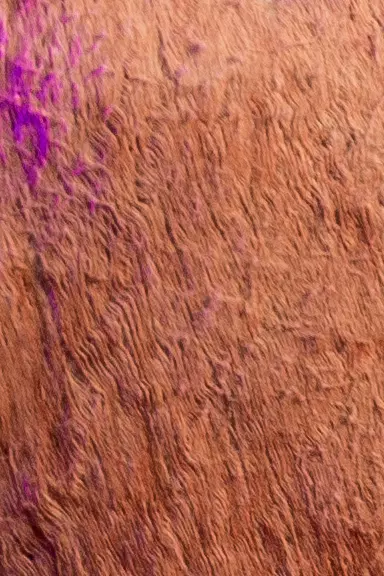From Bark to Beauty: Crafting the Obom Fabric
The creation of Obom fabric begins with the bark of the Aloa tree, also referred to as "Andom" or "Nloi," with variations in regional terminology. This tree finds its roots in the lush equatorial forests of Cameroon, where its bark possesses unique properties, making it the fundamental source of this traditional textile.
The Aloa tree's bark typically measures 1 to 2 millimeters in thickness. The bark embarks on a meticulous journey, starting with a steam treatment. Following this, it undergoes a gentle tapping process using a specific wooden tool to achieve a smooth and refined texture. The final step in its transformation involves careful stretching under the sun until it attains its ideal shape and color. This intricate and time-honored production process relies on manual craftsmanship, creating a rare and relatively expensive textile.
Obom Fabric: Weaving Tradition into Every Thread
The Obom fabric finds versatile use in Cameroonian culture. It is an integral part of traditional attire, donned during significant cultural events such as weddings, funerals, and festivals, where its intricate patterns and vibrant hues symbolize cultural identity and heritage.
With a historical connection to royalty, Obom fabric has adorned kings and queens, signifying nobility and prestige. This association with regal authority continues to influence its use in contemporary fashion, lending an air of distinction to special occasions. Moreover, Obom fabric transcends into the realm of art, providing a canvas for Cameroonian painters to express their cultural heritage. These artworks captivate the eye and convey the fabric's deep-rooted cultural and historical significance.
In modern times, Obom fabric has seamlessly integrated into everyday fashion. From dresses and suits to accessories like bags and scarves, its unique patterns and quality make it a favored choice for those seeking to infuse their daily attire with a touch of Cameroonian culture.
Additionally, the fabric is sacred in spiritual and ceremonial practices within African traditional religions. It adorns statues and altars, becoming essential in religious ceremonies and rituals, emphasizing its multifaceted cultural importance.
Obom in Modernity: Bridging Tradition and Contemporary Expression
The Obom fabric, deeply rooted in Cameroonian tradition, has seamlessly transitioned into modernity, demonstrating its enduring relevance and adaptability. Its journey from a traditional textile to a contemporary cultural icon is a testament to its significance:
Fashion Forward: In modern fashion, the Obom fabric has become prominent. Designers and fashion enthusiasts have embraced its vibrant patterns and rich colors, incorporating them into various clothing items. Obom fabric adds a touch of Cameroonian culture to everyday attire, from dresses and suits to accessories like bags and scarves.
Eco-Friendly Ethos: The eco-friendly nature of the fabric aligns with the growing global consciousness of sustainable practices. The Obom fabric is a model for environmentally conscious materials in a world increasingly focused on environmental responsibility.
Global Awareness: The Obom fabric's presence has transcended national borders. Its use and recognition have expanded to the international stage, introducing the world to the cultural richness of Cameroon. It has become a means of cultural exchange and celebration.
This article takes readers on a fascinating journey through the evolution of the Obom fabric in Cameroon. Originating from traditional roots in equatorial forests, the Obom fabric has become a contemporary expression in fashion, art, and sustainability. It is a cultural emblem, bridging the past and present and symbolizing the nation's identity. The exploration leaves a profound appreciation for the enduring significance of the Obom fabric, seamlessly blending modernity with cultural heritage. Its vibrant patterns and eco-friendly ethos inspire, showcasing the power of tradition and artistry in a changing world. The Obom fabric remains a dynamic messenger of Cameroonian culture, weaving the tapestry of the nation's heritage for generations to come.
From bark to beauty, Obom fabric is a living canvas of Cameroonian culture. - La Djalobienne Eton
References:
- https://www.facebook.com/1515992088722281/posts/2707949049526573/
- https://www.auletch.com/traditions-legendes-a-decouverte-de-lobom-tissu-a-base-de-fibres-decorces/










